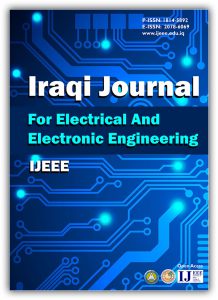
June 2007
<Previous Issue Next Issue>
| algorithm for 2D-data array addition using digit-decomposition-plane representation |
| Sabah S. Alsheraidah, Alaa A. W. Al-Saffar, Mohmmed A. A. Al-Ebbady |
| Pages: 11-20 |
| FULL TEXT (PDF) |
| Abstract: |
|
In this paper, optical scalable parallel and high-speed 2D data array adder for trinary signed digit (TSD) number is proposed. The digit decomposition-plane (DDP) coding method is used to represent the 2D TSD data arrays. The algorithm performs parallel TSD addition in constant time independent of the size of the TSD data arrays. The design describes methodology to involve two-step TSD adder. The TSD addition is expressed with several combination logic formulas that are newly derived. Optical implementation with classical optical elements is suggested for proposed TSD adder. Preliminary demonstration example is also described. |
| Optical Parallel Quaternary Signed Digit Multiplier For Large Scale Two-Dimensional Array Using Digit-Decomposition Plane Representation | |||||||||||||||||||||||||
| Alaa A. W. Al-Saffar | |||||||||||||||||||||||||
| Pages: 21-32 | |||||||||||||||||||||||||
| FULL TEXT (PDF) | |||||||||||||||||||||||||
| Abstract: | |||||||||||||||||||||||||
|
An optical parallel quaternary signed digit (QSD) two-dimensional array multiplier based on digit-decomposition (DDP) representation and duplication-shifting-superimposing algorithm is proposed in this paper. The multiplication operation is done in three steps; one for partial products generation and the other two steps perform accumulation to find the DDP planes of the final result array. QSD multiplication and addition rules are used to obtain a newly derived equations which are suitable for easy optical implementation using basic optical tools. Finally, simulation results are presented to validate the successful of the multiplication operation. |
|||||||||||||||||||||||||
|
|||||||||||||||||||||||||
| Symbolic Analysis of Electronic Circuits Using Wavelet Transform | |||||||||||||||||||||||||
| A. A. Al-Itaby, F. M. Al-Naima | |||||||||||||||||||||||||
| Pages: 65-78 | |||||||||||||||||||||||||
| FULL TEXT (PDF) | |||||||||||||||||||||||||
| CONDENSER AND DEAERATOR CONTROL USING FUZZY-NEURAL TECHNIQUE |
| Abduladhem A. Ali, A’ayad Sh. Mohammed |
| Pages: 79-96 |
| FULL TEXT (PDF) |
| Abstract: |
|
A model reference adaptive control of condenser and deaerator of steam power plant is presented. A fuzzy-neural identification is constructed as an integral part of the fuzzy-neural controller. Both forward and inverse identification is presented. In the controller implementation, the indirect controller with propagating the error through the fuzzy-neural identifier based on Back Propagating Through Time (BPTT) learning algorithm as well as inverse control structure are proposed. Simulation results are achieved using Multi Input-Multi output (MIMO) type of fuzzy-neural network. Robustness of the plant is detected by including several tests and observations. |
| HIERARCHICAL ARABIC PHONEME RECOGNITION USING MFCC ANALYSIS |
| ABDULADHEM A. ALI, INTESSAR T. HWAIDY |
| Pages: 97-106 |
| FULL TEXT (PDF) |
| Abstract: |
|
In this paper, a hierarchical Arabic phoneme recognition system is proposed in which Mel Frequency Cepstrum Coefficients (MFCC) features is used to train the hierarchical neural networks architecture. Here, separate neural networks (subnetworks) are to be recursively trained to recognize subsets of phonemes. The overall recognition process is a combination of the outputs of these subnetworks. Experiments that explore the performance of the proposed hierarchical system in comparison to nonhierarchical (flat) baseline systems are also presented in this paper. |